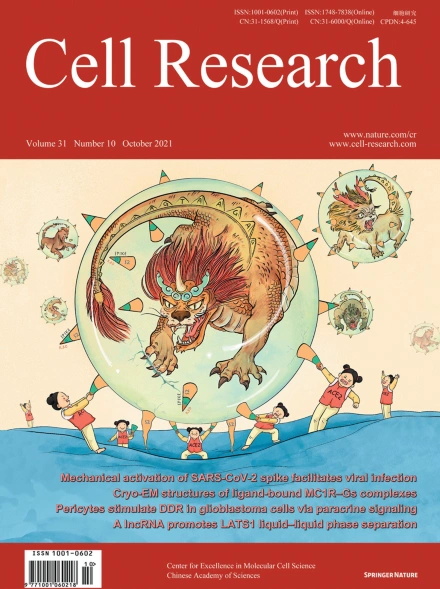
Advanced Search
Submit Manuscript
Advanced Search
Submit Manuscript
Volume 31, No 10, Oct 2021
ISSN: 1001-0602
EISSN: 1748-7838 2018
impact factor 17.848*
(Clarivate Analytics, 2019)
Volume 31 Issue 10, October 2021: 1126-1129 |
Structure-based analyses of neutralization antibodies interacting with naturally occurring SARS-CoV-2 RBD variants
Hua Xu1,† , Bo Wang1,† , Tian-Ning Zhao1,† , Zi-Teng Liang2,† , Tian-Bo Peng1 , Xiao-Hui Song1 , Jia-Jing Wu2 , You-Chun Wang2,* , Xiao-Dong Su1,*
1State Key Laboratory of Protein and Plant Gene Research, School of Life Sciences, and Biomedical Pioneering Innovation Center (BIOPIC), Peking University, Beijing, ChinaDear Editor,
SARS-CoV-2 variants are developing rapidly among COVID-19 patients, likely resulting in higher transmissibility at the population level.1,2,3,4,5 Mutations in the spike proteins (S proteins) of these variants are supposed to be related with receptor binding and virus invasion. Examples of these prevalent variants include the B.1.1.7 lineage that emerged in the United Kingdom (UK), the B.1.351 lineage (also termed 501Y.V2) in South Africa (SA), and the P.1 and P.2 lineages in Brazil, etc. Many S protein alterations, especially in the receptor binding domain (RBD), characterize these variants, e.g., the N501Y mutation in B.1.351 and the K417N (or T)/E484K/N501Y co-mutation in the SA and Brazil variant.2,3,5 The RBD is responsible for interacting with mammalian receptor angiotensin-converting enzyme 2 (ACE2) to mediate the viral infection of host cells. It is also concentrated with epitopes for neutralizing antibodies (NAbs), thus playing a vital role in the study of prophylactics and therapeutics for COVID-19.6,7,8,9,10 Whether those RBD mutations may alter virus–host cell interactions and gain resistance to NAbs needs to be addressed.
https://doi.org/10.1038/s41422-021-00554-1